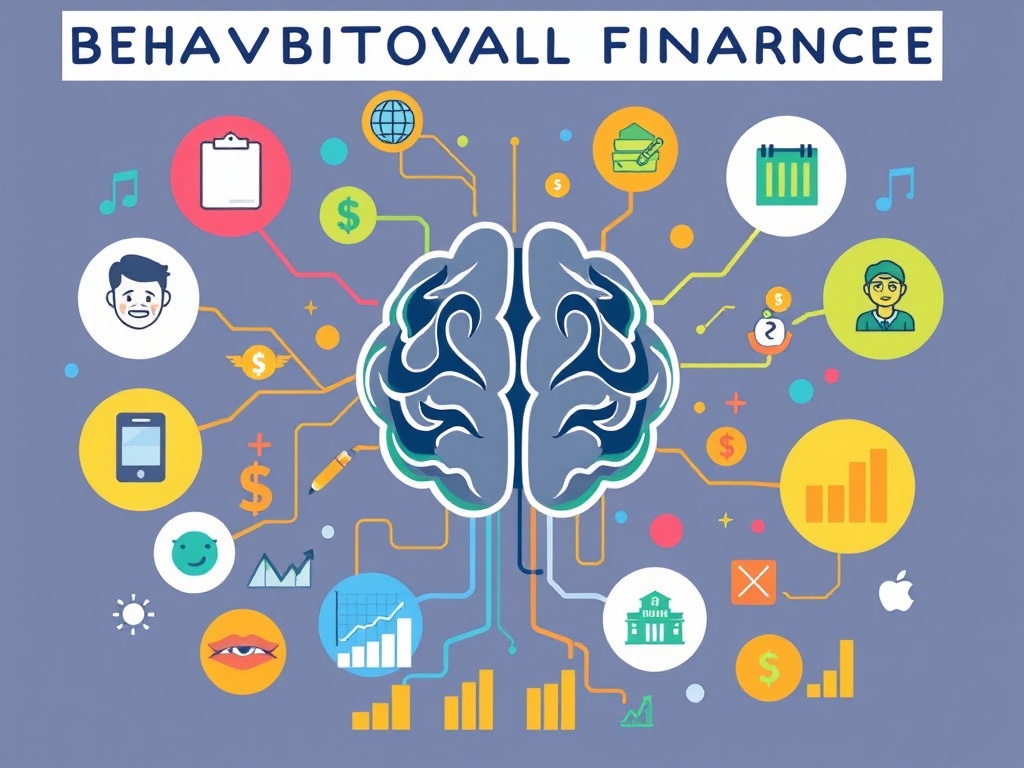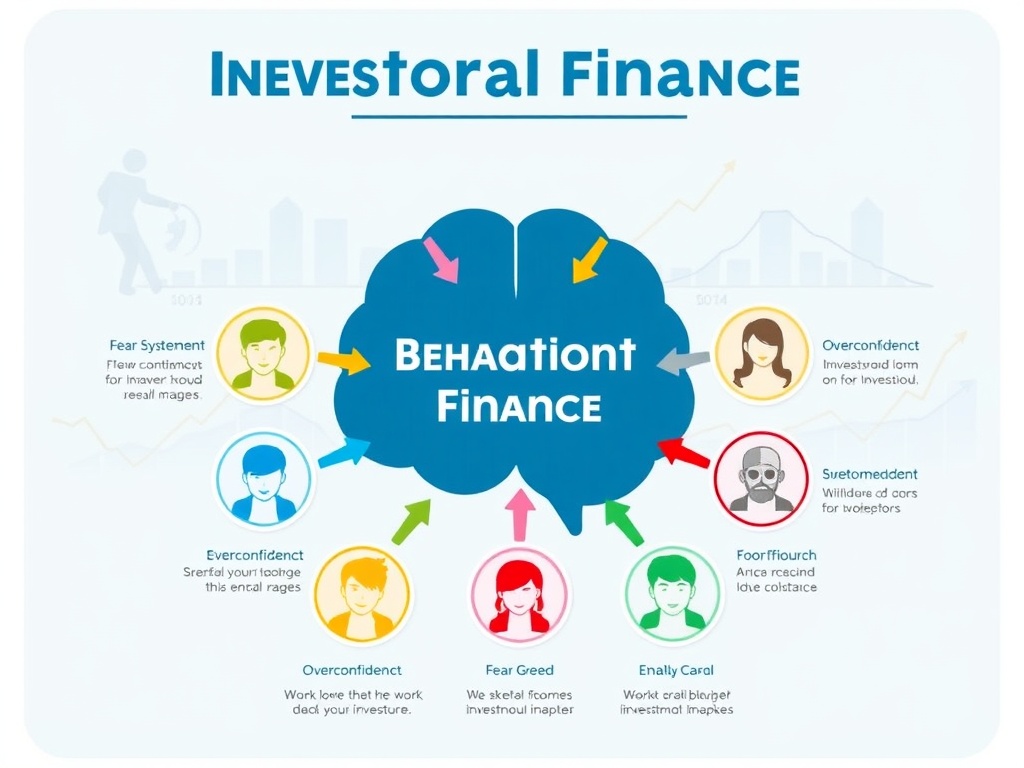Understanding the Psychology Behind Investment Decisions
In the world of investing, success is often thought to depend on logic, analysis, and data. Yet, even the most rational investors sometimes make decisions driven by fear, greed, or overconfidence. This is where behavioral finance investment psychology comes into play — an area of study that explores how emotions and cognitive biases influence financial behavior.
Understanding behavioral finance is essential for anyone who wants to make better investment choices. It bridges the gap between economics and psychology, revealing why investors often act irrationally and how those patterns shape the broader financial markets.
In 2025, as markets become increasingly fast-paced and data-driven, mastering the psychology of investing is more important than ever.
What Is Behavioral Finance?
Behavioral finance is the study of how psychological influences and emotional factors affect investors’ decisions and financial markets. Traditional economic theory assumes that people act rationally, seeking to maximize profits and minimize risks. However, behavioral finance shows that human behavior often deviates from this ideal.
Investors make mistakes — not because they lack information, but because their emotions, biases, and mental shortcuts influence their judgment.
Behavioral finance examines these irrational tendencies and helps explain phenomena such as market bubbles, panic selling, and herd behavior.
Why Psychology Matters in Investing
Markets are not just driven by numbers and data — they are powered by people. Every price movement reflects millions of individual decisions, shaped by emotion and perception as much as by fundamentals.
When investors let emotions guide their actions, they may buy at market peaks (out of greed) or sell during downturns (out of fear). Understanding the psychology behind investment decisions helps investors recognize these emotional triggers and make more rational choices.
Behavioral finance provides practical tools for:
- Identifying emotional and cognitive biases.
- Improving risk assessment and timing.
- Building discipline and patience in investment strategies.
The Most Common Behavioral Biases in Investing
Behavioral finance identifies dozens of cognitive and emotional biases that influence investors. Below are some of the most impactful ones:
1. Overconfidence Bias
Many investors overestimate their knowledge, skills, and ability to predict market movements. Overconfidence often leads to excessive trading, which increases transaction costs and reduces long-term returns.
2. Herd Mentality
When investors follow the crowd — buying because everyone else is buying or selling because everyone is panicking — they engage in herd behavior. This collective mindset fuels market bubbles and crashes.
3. Loss Aversion
According to behavioral economists Daniel Kahneman and Amos Tversky, people feel the pain of losses twice as strongly as they feel the pleasure of equivalent gains. As a result, investors often hold losing positions too long or sell winners too early.
4. Anchoring Bias
Anchoring occurs when investors rely too heavily on an initial piece of information (like a stock’s previous price) when making decisions. This prevents them from objectively reassessing the value of an asset.
5. Confirmation Bias
Investors tend to seek information that supports their existing beliefs and ignore data that contradicts them. This bias can lead to poor diversification and missed opportunities.
6. Recency Bias
People often give more weight to recent events than to long-term historical trends. For example, after a strong bull run, investors may believe the market will keep rising indefinitely.
7. Familiarity Bias
Investors often prefer assets, companies, or industries they already know — which can result in portfolios that lack diversification.
The Impact of Behavioral Biases on Market Trends
Behavioral biases don’t just affect individual investors — they influence entire markets. When millions of people act irrationally at once, collective patterns emerge.
- Market Bubbles: Driven by overconfidence and herd mentality, bubbles occur when investors inflate asset prices far beyond intrinsic value.
- Market Crashes: When sentiment turns negative, loss aversion and panic selling trigger sharp declines.
- Momentum Trading: Recency bias can create trends where investors chase recent winners, perpetuating volatility.
Behavioral finance helps explain why markets sometimes deviate from fundamental value — and why timing them perfectly is nearly impossible.
Behavioral Finance and Risk Perception
How investors perceive risk is deeply psychological. Two investors can look at the same stock but see completely different levels of danger or opportunity based on their past experiences and emotional state.
For example:
- After a market crash, fear often drives investors to avoid risk altogether — missing future gains.
- During booms, greed may cause excessive risk-taking and leverage.
By understanding their own investment psychology, investors can learn to view risk more objectively, balancing emotion with logic.
How Emotions Influence Investment Decisions
Fear and Greed
Fear pushes investors to sell during downturns, while greed drives them to buy during rallies — both of which often lead to poor timing.
Regret
After making a bad investment decision, investors may avoid similar opportunities out of fear of repeating mistakes, even when conditions have changed.
Euphoria
Excessive optimism can blind investors to risks, leading to speculative bubbles and unsustainable valuations.
Recognizing these emotions is the first step toward mastering them. Successful investors develop the discipline to act contrary to their instincts when markets are irrational.
The Role of Behavioral Finance in Portfolio Management
Behavioral insights can significantly improve portfolio management strategies. By acknowledging the psychological component of investing, investors can design systems that minimize bias and maximize rationality.
Here are some key applications:
- Automatic Rebalancing: Helps maintain diversification by removing emotional decision-making.
- Predefined Rules: Setting clear buy/sell parameters prevents impulsive reactions to market swings.
- Diversification: Reduces exposure to emotional reactions linked to specific assets.
- Regular Reviews: Encourages long-term thinking instead of short-term emotional responses.
Many modern robo-advisors incorporate behavioral finance principles to guide investors toward consistent, emotion-free decisions.
How to Overcome Behavioral Biases
Understanding biases is one thing — overcoming them requires conscious effort. Here are practical strategies:
- Educate Yourself Continuously
Stay informed about market fundamentals rather than relying on short-term news or opinions. - Develop an Investment Plan
Having a clear, long-term strategy helps you stay disciplined during volatility. - Use Automation Tools
Automated investing platforms can help enforce consistency and prevent impulsive decisions. - Diversify Your Portfolio
A well-diversified portfolio naturally reduces emotional stress caused by individual asset performance. - Track Your Decisions
Keeping an investment journal helps identify recurring emotional patterns and mistakes. - Consult a Financial Advisor
A professional perspective can counterbalance your biases and keep your strategy aligned with your goals.
Behavioral Finance in the Age of AI and Big Data
Technology is changing the landscape of behavioral finance. Artificial intelligence and data analytics can now detect investor sentiment across millions of data points, from trading patterns to social media posts.
Financial institutions use AI tools to monitor emotional signals in the market — identifying periods of euphoria or panic. Similarly, retail investors can access behavioral insights through platforms that analyze personal performance and decision-making tendencies.
In the future, AI will likely play an even greater role in helping investors recognize and counteract their biases in real time.
The Long-Term Value of Understanding Investor Psychology
Mastering behavioral finance investment psychology provides a powerful competitive edge. Investors who understand their emotions — and those of the broader market — are better equipped to:
- Avoid impulsive decisions.
- Stay committed to long-term goals.
- Capitalize on opportunities created by irrational market behavior.
The key is not to eliminate emotion altogether but to recognize and manage it effectively. Emotionless investing is impossible — but emotionally intelligent investing is achievable.

In Summary
Behavioral finance reveals an essential truth: investing is not just about numbers — it’s about human behavior. By understanding how psychology influences decision-making, investors can overcome biases, maintain discipline, and make smarter financial choices.
In today’s fast-paced, uncertain market environment, those who master the emotional side of investing will not only achieve better results but also build resilience and confidence for the long term.
Ultimately, the most successful investors are not those who ignore their emotions, but those who understand them.




